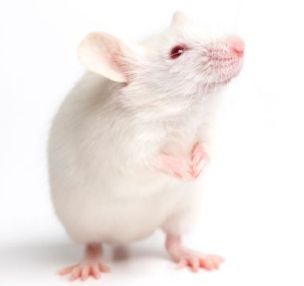Navigation
Hair Loss News Archives
15 July 2013
Mouse model gives insight to human hair loss
Nov 2004
A progressive skin disease causing hair loss in adult humans was identified in laboratory mice, providing a genetic tool to study the disease known as alopecia areata (AA).
"Our mouse model has proven to be very useful as a preclinical model to test new treatments for alopecia areata before being used in humans," states lead researcher, John P. Sundberg, D.V.M., Ph.D., of The Jackson Laboratory inBar Harbor, Maine. The study further provided the opportunity to use newly available gene array technology to study AA's molecular mechanisms.

In this 5-year study, published in the Journal of Investigative Dermatology, researchers identified a virtually identical mouse model for human adult onset AA and were able to reproduce the disease for exploring treatments.
Data revealed that the disease has a complicated genetic basis that involves 4 or more genes. These genes include those involved in susceptibility to the disease and genes that regulate pigmentation of the skin and hair.
"This [study] provides data for analyzing the genetic candidates responsible for AA as well as insights into other conditions, such as thyroid disorders, which have been associated with AA subsets," as summarized in the November "Clinical Snippets" published in the journal. "Random genome-wide linkage screenings in mice and humans can lead to greater understanding of AA and other complex polygenic diseases."
Alopecia areata is a highly unpredictable, autoimmune skin disease resulting in the loss of hair on the scalp and elsewhere on the body, according to the National Alopecia Areata Foundation. The condition is common, affecting both males and females in approximately 1.7 percent of the world population overall. This accounts for more than 4.7 million people in the United States alone.
